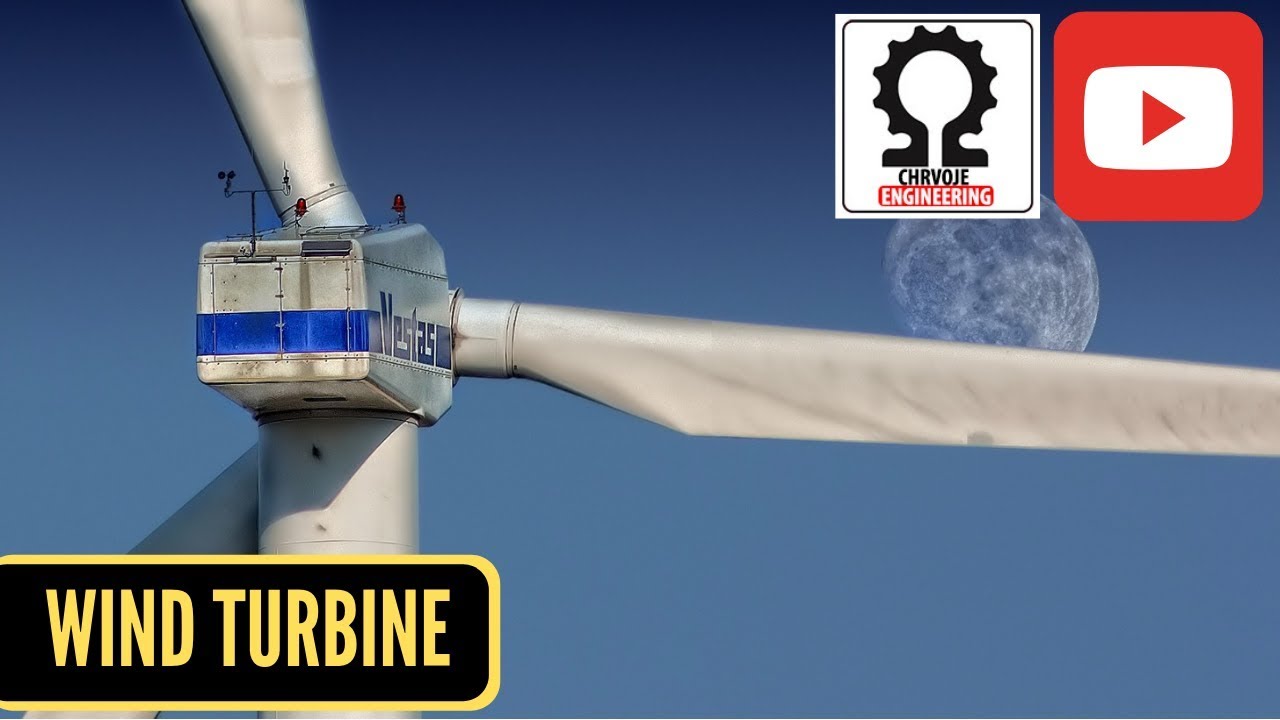Energy 101: Wind Power
Summary
TLDRThis script explores the evolution from old windmills to modern wind turbines, highlighting their role in harnessing wind energy to generate electricity. It explains how wind turbines operate, with blades spinning due to air pressure differences, and how the rotor's slow rotation is increased by gears to power a generator. The script emphasizes the advantages of height for capturing stronger winds and the efficiency of larger turbines. It also discusses the potential of offshore wind energy, with the U.S. supporting projects to tap into this abundant resource, especially along coastal areas where over half the population resides. Wind energy is portrayed as a key to America's renewable energy future and energy independence.
Takeaways
- 🌬️ Old-fashioned windmills are the precursors to modern wind turbines used for electricity generation.
- 🏜️ Wind farms are often located in windy areas such as deserts and prairies to harness the most wind energy.
- ⚙️ The aerodynamic design of wind turbine blades creates an uneven air pressure that causes them to spin.
- 💡 A weather vane and computer system align the turbine with the wind for optimal energy capture.
- 🔩 The slow rotation of the blades is increased by a gearbox to a speed suitable for electricity generation.
- 🚧 Wind turbines are tall to access stronger and more consistent winds, which are crucial for power generation.
- 🌀 Larger turbines can sweep a larger area with their blades, increasing their efficiency in capturing wind energy.
- 🏡 A small wind farm can produce enough electricity to power thousands of homes, highlighting the scalability of wind energy.
- 🌊 Offshore wind turbines can tap into the consistent wind sources over oceans and large lakes, expanding renewable energy options.
- 🌐 The U.S. Energy Department supports offshore wind projects, aiming to increase domestic renewable energy production.
- 🏙️ With a significant portion of the U.S. population living near coastlines, offshore wind energy has the potential to serve many homes and businesses.
Q & A
What is the historical connection between old windmills and modern wind turbines?
-Old windmills, which were used to pump water for cattle, are the predecessors of modern wind turbines that generate electricity. Both capture the wind's energy, although modern turbines are more complex machines.
Why are wind farms often located in deserts or prairies?
-Wind farms are often located in deserts or prairies because these areas are typically windy, providing an ideal environment for wind turbines to generate electricity efficiently.
How do wind turbine blades function to generate electricity?
-Wind turbine blades function similarly to airplane wings, creating uneven air pressure on either side of the blade, which causes them to spin. This spinning motion is then used to generate electricity.
What role does the weather vane on top of a wind turbine play?
-The weather vane on top of a wind turbine is connected to a computer to keep the turbine facing into the wind, ensuring it captures the most energy.
Why do wind turbines need to be so tall?
-Wind turbines are tall because the higher up you go, the windier it is. This allows the turbines to capture more wind and generate more electricity.
How do the blades' rotation speed compare to the generator's requirements?
-The blades rotate at about 18 revolutions per minute, which is too slow for the generator to produce electricity. Therefore, a series of gears increases the rotation speed to about 1800 revolutions per minute.
What is the potential impact of a small wind farm on electricity generation?
-Even a small wind farm can generate enough electricity to power over 9,000 homes, demonstrating the significant potential of wind energy for electricity generation.
How do offshore wind turbines differ from onshore ones in terms of energy production?
-Offshore wind turbines can capture the reliable and consistent wind from oceans and large lakes, turning it into electricity. They also have the potential to significantly boost domestic renewable energy production, especially in coastal areas.
What is the significance of the U.S. Energy Department's support for offshore wind projects?
-The U.S. Energy Department's support for offshore wind projects is significant as it helps build some of the first offshore wind turbines in U.S. waters, contributing to the growth of the wind energy industry.
How does the proximity of the U.S. population to coastlines influence wind energy potential?
-With over 50% of the U.S. population living within 50 miles of a coastline, capturing wind off America's shores has the potential to provide energy to countless homes and businesses.
What is the broader goal of wind energy development in the United States?
-The broader goal of wind energy development is to provide a reliable and renewable clean energy source, helping move America toward energy independence.
Outlines

Cette section est réservée aux utilisateurs payants. Améliorez votre compte pour accéder à cette section.
Améliorer maintenantMindmap

Cette section est réservée aux utilisateurs payants. Améliorez votre compte pour accéder à cette section.
Améliorer maintenantKeywords

Cette section est réservée aux utilisateurs payants. Améliorez votre compte pour accéder à cette section.
Améliorer maintenantHighlights

Cette section est réservée aux utilisateurs payants. Améliorez votre compte pour accéder à cette section.
Améliorer maintenantTranscripts

Cette section est réservée aux utilisateurs payants. Améliorez votre compte pour accéder à cette section.
Améliorer maintenantVoir Plus de Vidéos Connexes

Pembangkit Listrik Tenaga Bayu / Tenaga Angin (PLTB) - Prinsip Kerja, Kelebihan dan Kekurangan

Video Animasi mengenal Pembangkit Listrik Tenaga Bayu (Angin) dalam versi English

How do Wind Turbines Work?

What is Wind Energy | Science for Kids

Energi Angin

PLTB || Sejarah, Komponen Utama dan Cara Kerja Pembangkit Listrik Tenaga Bayu (Angin)
5.0 / 5 (0 votes)
